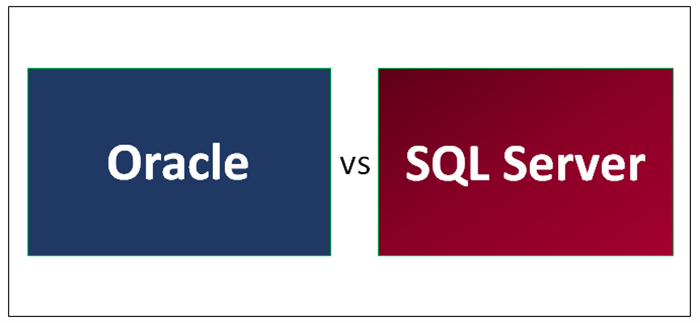We're open through the holidays to support your upskilling goals — book your session today!
We're open through the holidays to support your upskilling goals — book your session today!
Unable to find what you're searching for?
We're here to help you find it
Structured Query Language (SQL) is one of the most important languages in the world of data management. It is a standard language used for storing, retrieving, and manipulating data in a Relational Database Management System (RDBMS). Two of the most popular RDBMS in the market are SQL Server and Oracle. Both softwares have been used around the world for decades and have seen a number of changes take place. In this blog post, we will discuss the future of SQL Server and Oracle and what to expect from these systems in the coming years.
Microsoft SQL Server is a Relational Database Management System (RDBMS) developed by Microsoft. It was first released in 1989 and has since undergone significant changes. SQL Server is designed to support business intelligence, analytics, and online transaction processing. It is a powerful system that provides a wide range of features such as advanced security, high availability, and scalability.
Oracle is another popular RDBMS that was first released in 1979. It is designed to support enterprise-level applications and has become a standard in many industries. Oracle is known for its robustness, scalability, and reliability. It provides a wide range of features such as data warehousing, business intelligence, and online transaction processing.
Both SQL Server and Oracle are powerful RDBMS that provides a wide range of features to businesses of all sizes. However, there are some key differences between these systems.
One of the biggest differences between SQL Server and Oracle is licensing. SQL Server has a simple licensing model that is based on the number of cores. On the other hand, Oracle has a complex licensing model that can be based on the number of users, processors, or even the amount of data stored.
When it comes to performance, both SQL Server and Oracle are very powerful. However, Oracle is known to perform better in larger-scale enterprise-level applications. SQL Server is a good option for smaller-scale applications.
Another difference between SQL Server and Oracle is the language used for programming. SQL Server uses Transact-SQL (T-SQL) while Oracle uses Procedural Language/SQL (PL/SQL). Both of these languages are powerful and provide similar functionality. We have explained this major difference below. Read on to find out more.
One of the biggest benefits of SQL Server is its integration with other Microsoft products. This includes integration with Microsoft Office, SharePoint, and Power BI. This makes it easy to create powerful business intelligence solutions.
SQL Server provides a wide range of high availability options such as Always On Availability Groups, Failover Clustering, and Log Shipping. This ensures that your data is always available when you need it.
SQL Server provides advanced security features such as Transparent Data Encryption, Always Encrypted, and Row-Level Security. This ensures that your data is protected at all times.
Read More: The Best Way to Learn SQL (Learn SQL Step-by-Step)
Oracle is known for its scalability. It can handle large amounts of data and is designed to support enterprise-level applications.
Oracle is a very reliable system that is designed to handle mission-critical applications. It provides features such as Real Application Clusters and Automatic Storage Management to ensure high availability and reliability.
Oracle is known to perform well in large-scale applications. It provides features such as parallel processing, partitioning, and in-memory processing to ensure high performance.
Read More: Guide for Oracle Database Certification
As cybersecurity experts, it's important to stay up-to-date with the latest trends and updates related to SQL Server and Oracle. Here are some of the newest trends and updates related to these systems:
Cloud-Based Solutions: Both SQL Server and Oracle offer cloud-based solutions for data management. Cloud-based solutions provide benefits like scalability, accessibility, and cost-effectiveness, making them an attractive option for businesses looking to manage their data more efficiently and effectively.
Data Science and AI: With the growth of big data, there is an increased focus on data science and AI. Both SQL Server and Oracle are expected to continue to provide features to support these areas, with a focus on making it easier to integrate machine learning models and perform data analysis.
Performance Optimisation: As data continues to grow, there is a need for improved performance and scalability. Both SQL Server and Oracle are expected to continue to focus on performance optimization, with new features like in-memory processing and column store indexes to improve query performance.
Security: Security is a critical concern for any database system. Both SQL Server and Oracle are expected to continue to introduce new security features to help protect data and ensure compliance with industry regulations.
Integration with Other Systems: SQL Server and Oracle are expected to continue to integrate with other systems, including popular BI and reporting tools. This integration provides benefits like easier data analysis and reporting.
Migrating from Oracle to SQL Server can be a complex process. It requires a thorough understanding of both systems and several issues can arise during the migration process.
One of the main issues is the differences in syntax between Oracle and SQL Server. While both systems use SQL, there are differences in the syntax used for certain commands. For example, Oracle uses the "NVL" function to replace null values, while SQL Server uses the "ISNULL" function. This can lead to syntax errors when migrating Oracle SQL code to SQL Server.
Another issue is differences in data types. Oracle and SQL Server have some similar data types, such as integer and date, but there are also differences in data types used for storing text and large objects. This can lead to data conversion issues during migration.
Security is also a concern during migration. Oracle and SQL Server have different security models, and it's important to ensure that security settings are correctly configured during migration to maintain data security.
T-SQL and PL-SQL are the proprietary procedural programming languages used by SQL Server and Oracle, respectively. Both languages are used to extend the functionality of SQL and provide advanced features for data management.
T-SQL is a variant of SQL used by Microsoft SQL Server. It is a powerful language that provides support for advanced features like triggers, views, and stored procedures. T-SQL is also known for its integration with other Microsoft products, such as Visual Studio.
PL-SQL is a procedural language used by Oracle. It provides features like loops, variables, and exception handling. PL-SQL is also known for its ability to work with large datasets, making it a popular choice for data-intensive applications.
When it comes to comparing T-SQL and PL-SQL, it's important to consider the specific needs of the project. Both languages have their strengths and weaknesses, and the choice between them will depend on the specific requirements of the project.
The future of SQL Server and Oracle is bright, with both systems expected to continue evolving and introducing new features to support modern data management needs.
SQL Server is expected to focus on providing enhanced support for data science and AI, with continuous integration with other Microsoft products and a focus on security and performance.
Oracle is expected to continue to focus on scalability and reliability, with a continued emphasis on cloud-based solutions and the introduction of new features to support data science and AI.
Overall, users can expect both SQL Server and Oracle to continue to evolve and provide new features to meet the changing needs of the industry. As the amount of data being generated continues to grow, the importance of these systems for effective data management will only increase.
In terms of migration, users can expect continued improvements in tools and processes to make migrating between these systems easier and more efficient. Companies offering migration services will likely continue to provide support for both Oracle to SQL Server and SQL Server to Oracle migrations, with a focus on reducing the complexity and minimizing downtime during the migration process.
In summary, both SQL Server and Oracle are critical database systems that play a vital role in the management of data. As the industry continues to evolve, both systems are expected to continue to introduce new features and capabilities to support modern data management needs.
SQL Server and Oracle are two of the most popular RDBMS in the market. Both of these systems have undergone significant changes in recent years and have introduced several new features. SQL Server is known for its integration with other Microsoft products, high availability, and advanced security. Oracle is known for its scalability, reliability, and performance. Both SQL Server and Oracle have embraced cloud-based solutions and introduced new features to support data science.
The future of SQL Server and Oracle is bright, and we can expect both systems to continue to evolve and provide new features to support modern data management needs. To stay ahead of the curve, cybersecurity experts need to stay current with the latest trends and updates in SQL Server and Oracle.

Aarav Goel has top education industry knowledge with 4 years of experience. Being a passionate blogger also does blogging on the technology niche.










